CPS Unit Number 043-03
Camp: 43
Unit ID: 3
Title: Zalduondo
Operating agency: AFSC
Opened: 12 1943
Closed: 4 1946
Workers
Total number of workers who worked in this camp: 17
-
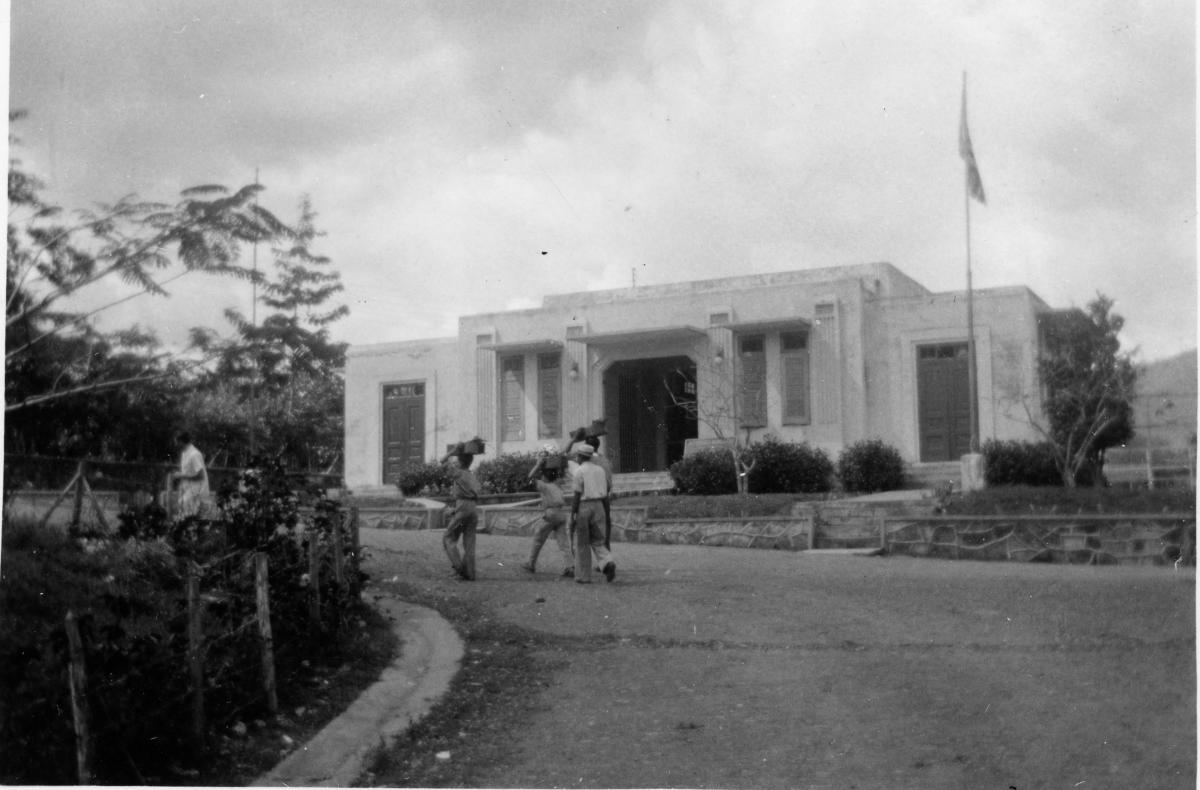 CPS Camp No. 43, Aibonito, Puerto RicoThe Community Center. The boxes being carried on the heads of the men are little caskets with the bodies of prematurely born triplets attended by Dr. PreheimDigital Image at Mennonite Church USA Archives, North Newton, Kansasca. 1943
CPS Camp No. 43, Aibonito, Puerto RicoThe Community Center. The boxes being carried on the heads of the men are little caskets with the bodies of prematurely born triplets attended by Dr. PreheimDigital Image at Mennonite Church USA Archives, North Newton, Kansasca. 1943 -
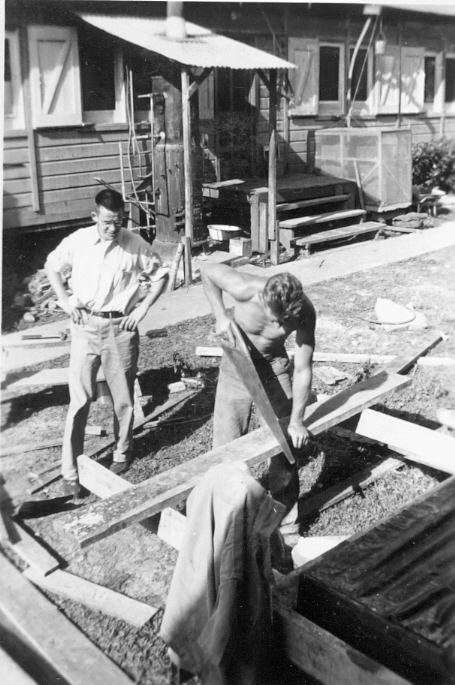 CPS Camp No. 43, subunit 1, Castñer Puerto RicoConstruction under way.Digital Image © 2011 Brethren Historical Library and Archives. All Rights Reserved.
CPS Camp No. 43, subunit 1, Castñer Puerto RicoConstruction under way.Digital Image © 2011 Brethren Historical Library and Archives. All Rights Reserved. -
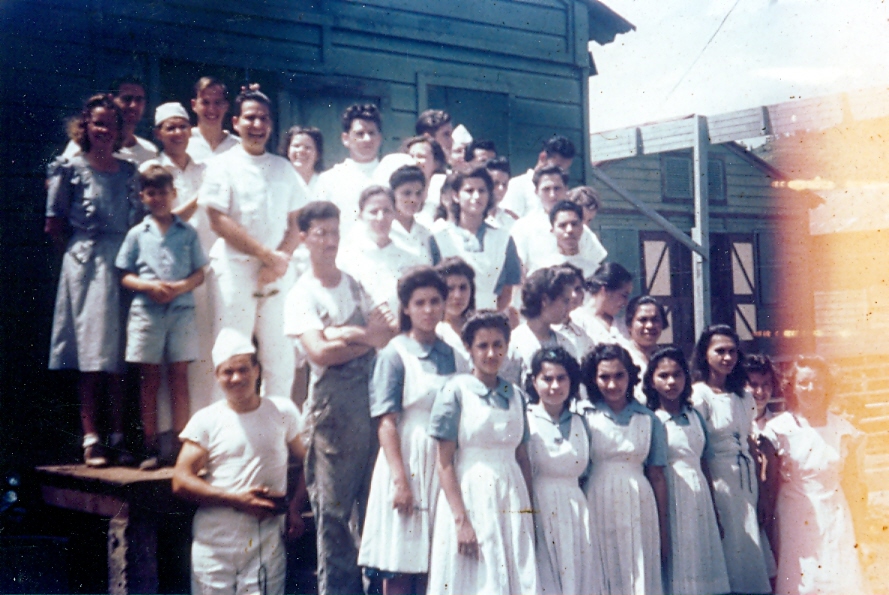 CPS Camp No. 43, subunit 1, Castñer Puerto RicoDan Boehm's picture of most pf the medical staff or related (kitchen, housekeeping, etc.); on front end of hospital.Digital Image © 2011 Brethren Historical Library and Archives. All Rights Reserved.
CPS Camp No. 43, subunit 1, Castñer Puerto RicoDan Boehm's picture of most pf the medical staff or related (kitchen, housekeeping, etc.); on front end of hospital.Digital Image © 2011 Brethren Historical Library and Archives. All Rights Reserved. -
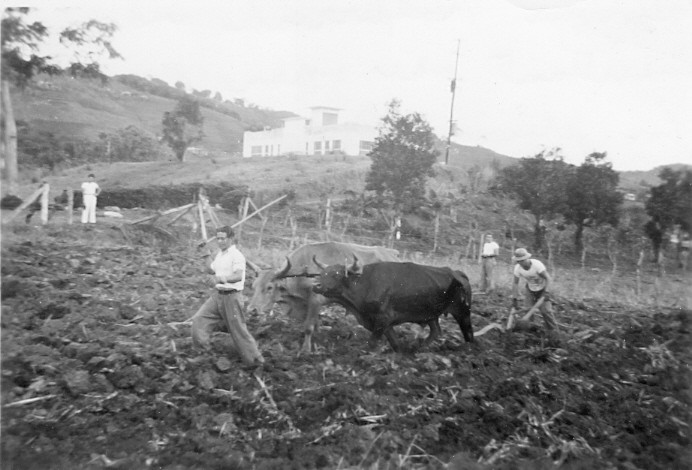 CPS Camp No. 43, subunit 1, Castñer Puerto RicoWilbur Holderread and assistant use oxen power for plowing.Digital Image © 2011 Brethren Historical Library and Archives. All Rights Reserved.
CPS Camp No. 43, subunit 1, Castñer Puerto RicoWilbur Holderread and assistant use oxen power for plowing.Digital Image © 2011 Brethren Historical Library and Archives. All Rights Reserved. -
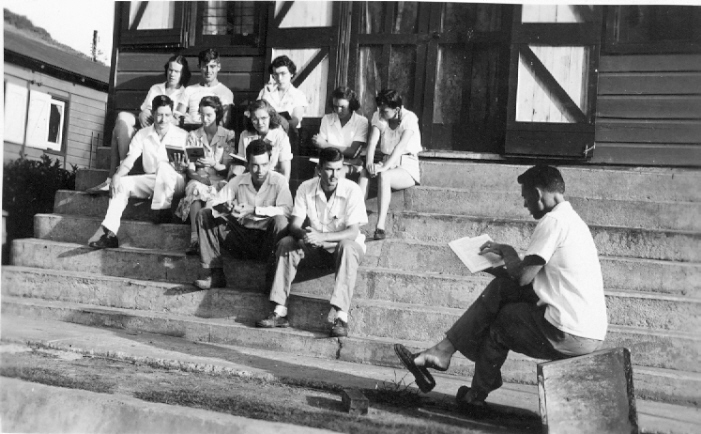 CPS Camp No. 43, subunit 1, Castñer Puerto RicoSpanish class.Digital Image © 2011 Brethren Historical Library and Archives. All Rights Reserved.
CPS Camp No. 43, subunit 1, Castñer Puerto RicoSpanish class.Digital Image © 2011 Brethren Historical Library and Archives. All Rights Reserved. -
 CPS Camp No. 43, subunit 4, St. Thomas Virgin IslandsBlackbeards CPS Unit Quarters. From the J. Henry Dasenbrock CollectionDigital Image Brethren Historical Library and Archives. All Rights Reserved
CPS Camp No. 43, subunit 4, St. Thomas Virgin IslandsBlackbeards CPS Unit Quarters. From the J. Henry Dasenbrock CollectionDigital Image Brethren Historical Library and Archives. All Rights Reserved -
 CPS Camp No. 43, subunit 2, Aibonito, Puerto RicoAibonito, Puerto Rico, camp 43.Box 1, Folder 24. MCC Photographs, Civilian Public Service, 1941-1947. IX-13-2.2. Mennonite Central Committee Photo Archive
CPS Camp No. 43, subunit 2, Aibonito, Puerto RicoAibonito, Puerto Rico, camp 43.Box 1, Folder 24. MCC Photographs, Civilian Public Service, 1941-1947. IX-13-2.2. Mennonite Central Committee Photo Archive -
 CPS Camp No. 43, subunit 2, Aibonito, Puerto RicoAibonito, Puerto Rico, camp 43. The inaugeration crowd at the front of the hospital for the official opening after the dedication address delivered by Dr. Hiebert in the community center.Box 1, Folder 24. MCC Photographs, Civilian Public Service, 1941-1947. IX-13-2.2. Mennonite Central Committee Photo Archive
CPS Camp No. 43, subunit 2, Aibonito, Puerto RicoAibonito, Puerto Rico, camp 43. The inaugeration crowd at the front of the hospital for the official opening after the dedication address delivered by Dr. Hiebert in the community center.Box 1, Folder 24. MCC Photographs, Civilian Public Service, 1941-1947. IX-13-2.2. Mennonite Central Committee Photo Archive -
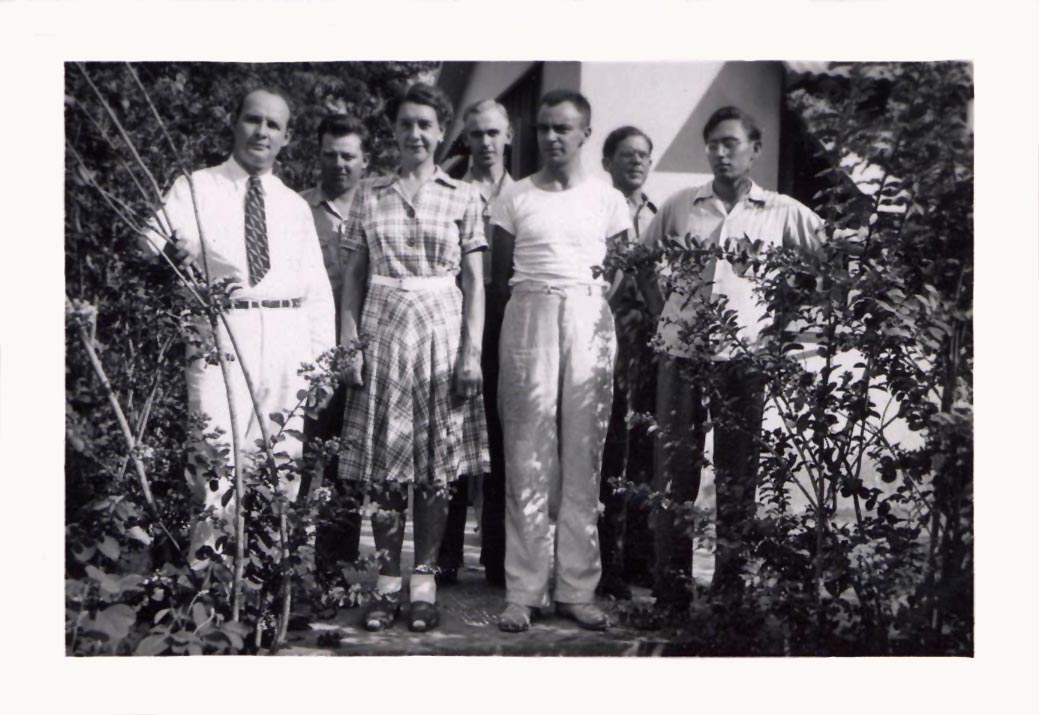 CPS Camp No. 43, subunit 1, Castñer Puerto RicoLate August, 1943
CPS Camp No. 43, subunit 1, Castñer Puerto RicoLate August, 1943 -
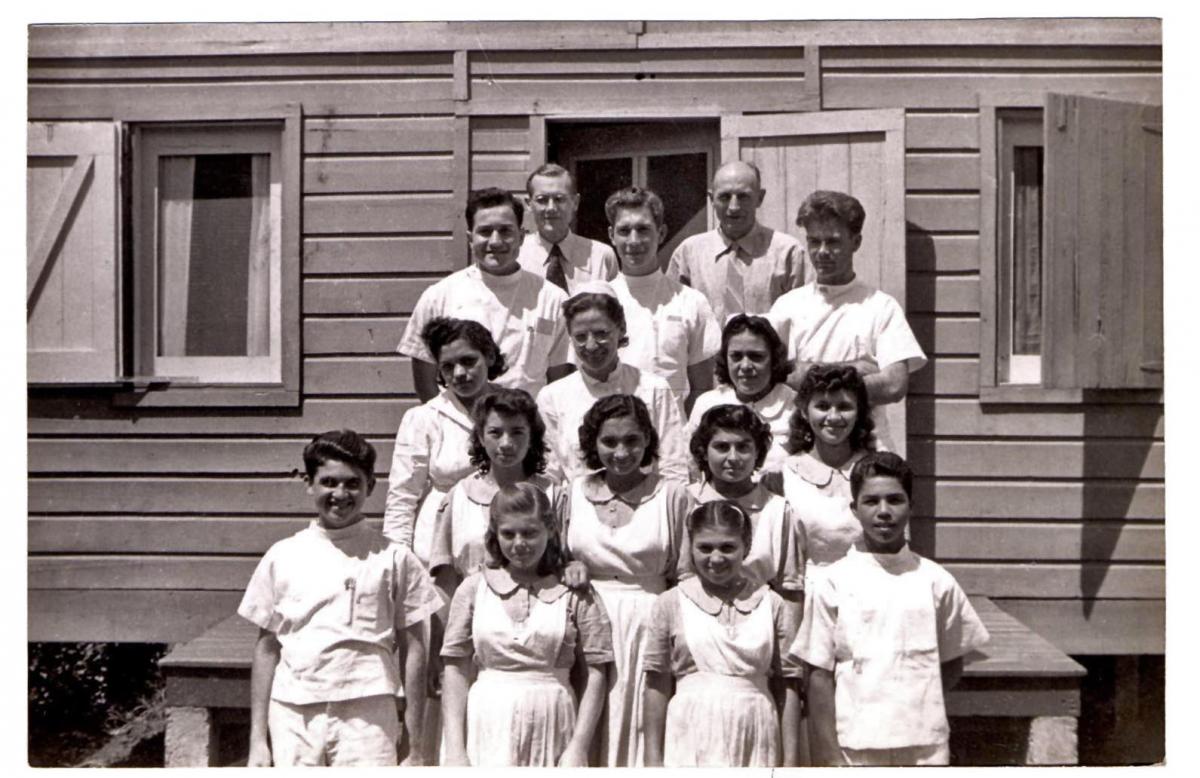 CPS Camp No. 43, subunit 1, Castñer Puerto RicoPuerto Rico
CPS Camp No. 43, subunit 1, Castñer Puerto RicoPuerto Rico -
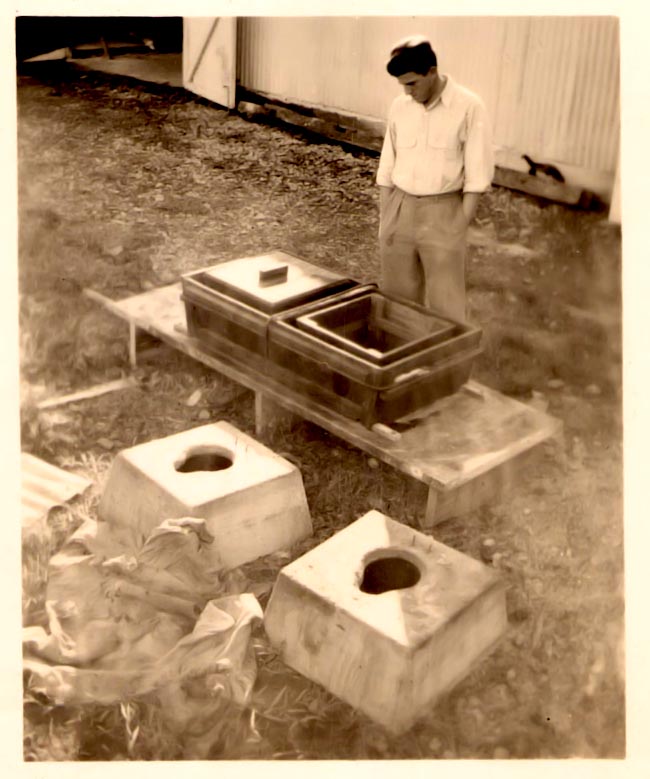 CPS Camp No. 43, subunit 1, Castñer Puerto RicoSan Just, Puerto Rico. Chris Ahrens looking at parts of privy constructionMay 29, 1945
CPS Camp No. 43, subunit 1, Castñer Puerto RicoSan Just, Puerto Rico. Chris Ahrens looking at parts of privy constructionMay 29, 1945
-
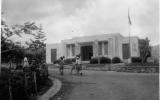 ca. 1943
ca. 1943 -
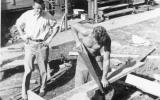
-

-
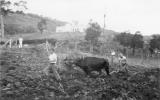
-
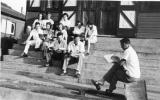
-

-
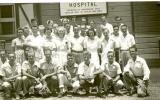
-
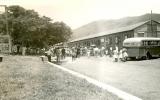
-
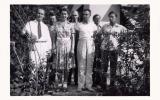
-

-
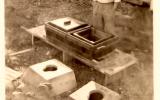 May 29, 1945
May 29, 1945
CPS Camp No. 43 Subunit 3, located in Zalduondo, Puerto Rico, was operated by the American Friends Service Committee in cooperation with the Brethren Service Committee. It opened in December 1943 and closed in the spring of 1946. Unit activity focused on medical, recreational, educational and child care work.
See description of the relationship of this subunit to the full Castañer project by clicking on CPS Camp No. 43-01.
When the Castañer project was well established, the unit expanded to new locations. The American Friends Service Committee administered and funded the unit developed at Zalduondo. The unit also sent some workers to St. Just.
Director: Dr. Asa Potts
In March 1944, nine men and at least one wife constituted the unit. During the life of the unit, a number of wives performed roles of nurse, teacher, and assisted in the community programs.
Men in Friends units tended to represent the greatest diversity with respect to religious identification. Few men in AFSC camps and units reported Friends denominational affiliation and it was not uncommon for the group to include men from a variety of religious groups as well as COs reporting no religious affiliation.
In Friends projects, men on average had completed 14.27 years of educational experience when entering CPS, with forty percent having completed both college and post graduate education. Forty-three percent of men in Friends camps and units entered with technical and professional work experience, as opposed to eighteen percent among men at Brethren and twelve percent in Mennonite projects. Men in the Friends projects tended to report more urban than rural experience. (Sibley and Jacob pp. 170-172)
Unit members served as regular staff members in various municipal government departments. For example, Bob Bogue worked “Special Detail” in San Juan with the U. S. Public Health Service and his wife Lucille Bogue worked as an orthopedic nurse at the Convalescent Home for Crippled Children at Guaynabo. Dr. Potts headed up the community medical program, holding regular clinics at the Rural Dispensaries at Zalduondo and at Mata de Platanos, about six miles away.
The clinics in the two dispensaries provided care for ambulant patients with an emphasis on special clinics for prenatal care, infants and pre-school children, venereal diseases, and treatment of parasitic and infectious diseases. A full time nurse, secretary and janitor staffed each clinic with Dr. Potts on hand two days a week. A dentist came one day every other week.
The unit partitioned off one room in the Zalduondo dispensary, equipping one of the resulting three spaces as a laboratory. There Jef Prescod provided lab examinations to inform the medical team.
During the second quarter of 1944, 1,354 patients were seen by the doctor in two clinics; of those 614 were new to the clinics. In the same period, Jef Prescod performed 687 laboratory examinations (Zalduondo Newsletter No. 8, October 26, 1944). Once tests showed positive for hookworm in children, unit personnel did follow-up with the family to check sanitation and related issues in the home. That was followed by a complete treatment plan for the child and assistance for the family in eradicating the cause.
With the opening of school, the medical program expanded to include examination of children and immunization of first-graders against typhoid, diphtheria and smallpox. Tests for hookworm were administered as a regular part of the examinations and treatments given when the test were positive. In other public health programs, unit members surveyed the condition of privies, moved some and reconditioned others. The men worked with the Island Heath Department’s privy factory at Ceiba to secure replacement parts for installation. They also prepared a flyer in Spanish explaining the modifications needed in the privies.
Ivan Chatham and Everett Crouch planted soybeans in the unit garden, the gardens of several Zalduondo resettlers, the school agricultural classes and on the PRRA central farm. Believing that soybeans could supply some of the nutrients missing in the Puerto Rican diet, they arranged to serve them in the school lunchrooms and sponsored demonstrations for their use in menu-planning.
In other nutritional programs, the unit set up a milk station at Zalduondo in cooperation with government agencies and a child feeding program serving not only milk but also other food items. Not only were the programs very popular, but also Puerto Ricans saw the benefits of agency and community cooperation.
The Community Center Building housed a vibrant program including community recreation, a nursery school for pre-school children, a library, crafts and other classes including English and typing, as examples. A movie series provided education about tuberculosis and hookworm. On another occasion, one of the resettlers, who had experimented with growing and preparing soybeans, gave a report on their benefits. Other events included music recitals, chalk talks on unit services such as sanitation, seed distribution and child care. Ted Sanders started a number of choral groups, including one for seventh, eighth and ninth graders at the Second School, and he gave music lessons.
Summer recreation emphasized camping. In 1945, nine scouts from Zalduondo and ten from St. Just were among the seventy boys from the Brumbaugh Reconstruction Unit at the YMCA campsite on the Mameyes River. Mary Esther Williams, the unit medical social worker, directed the camp of the Insular Home for Girls also held at the campsite.
The American Friends Service Committee assigned three men to work at St. Croix as part of the Martin G. Brumbaugh Reconstruction Unit.
Paul Furnas, the head of AFSC Civilian Public Service visited in March 1944, discussing progress and possible expansion at Zalduondo as well as plans for the AFSC projected site on St. Croix. When Brethren and Mennonite officials visited PRRA units, they too stopped at the Zalduondo unit to discuss issues of interest.
In the winter of 1944, unit members took Spanish classes (thirty minutes each morning) taught by camp dietician Evan Davis. Ike Chatham learned Dr. Frank Laubach’s method for teaching illiterate people to read and write at Castañer and then trained others at the Zalduondo unit in the method. Nearly twenty-five percent of the Zalduondo resettlers over ten years of age could neither read nor write.
Tragically, the Community Center building and contents were destroyed by fire on October 21, 1944. An adjacent rug-weaving building was saved so that the programs could continue after some renovation and reequipping. In the meantime, evening programs were held at the old CCC camp; outdoor basketball and volleyball courts were used; and some events were moved to the school.
In August 1945, the unit created an “after-dark-spot for letter writing, radio listening, reading and games” (Zalduondo Newsletter No. 14, August 28, 1945). The space became available in the Community Center when the War Emergency Program closed the nursery school. A table lamp made by Ray Schaal, green mosquito netting on the nine windows, and Chinese red table top, window ruffles and pillows provided the finishing touches.
The men published Zalduondo Newsletter from March 1944 through April 1946, with the assistance of the American Friends Service Office in Philadelphia, which duplicated and distributed it for broader circulation.
For more information on the Castañer project, see Leslie Eisan, Pathways of Peace: A History of the Civilian Public Service Program Administered by the Brethren Service Committee. Elgin, IL: Brethren Publishing House, 1948, pp. 333-259.
For stories from men who, as COs, walked to a different drummer during World War II, see Mary R. Hopkins, Editor, Men of Peace: World War II Conscientious Objectors. Caye Caulker, Belize: Producciones de le Hamaca, 2010, Chris Ahrens pp. 220-224.
For general information on CPS camps and units, see Albert N. Keim, The CPS Story: An Illustrated History of Civilian Public Service. Intercourse, PA: Good Books 1990.
See also Mulford Q. Sibley and Philip E. Jacob, Conscription of Conscience: The American State and the Conscientious Objector, 1940-47. Ithaca, NY: Cornell University Press, 1952, including pp. 141-143 on the P.R.R.A. project.
See also digital photo images of CPS and Voluntary Service work in Puerto Rico on the flikr website compiled by Tom Lehman at http://www.flickr.com/photos/tlehman Note the collections on Puerto Rico within the site: Puerto Rico, 1940s-1950s (81 sets, some by CPS workers); Old Puerto Rico Photos & Postcards (4 sets); Puerto Rico Black & White (1 set); Art Gallery (2 sets).
Swarthmore College Peace Collection, Camp periodicals database.
Zalduondo Newsletter No. 1 (March 23, 1944); No. 3 (May 23, 1944); No. 5 (July 26, 1944); No. 6 (August 25, 1944); No. 7 (September 26, 1944); No. 8 (October 26, 1944); No. 14 (August 28, 1945) in the Swarthmore College Peace Collection, American Friends Service Committee: Civilian Public Service Records (DG002), Section 3, Box 10.